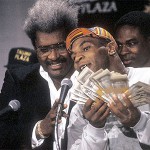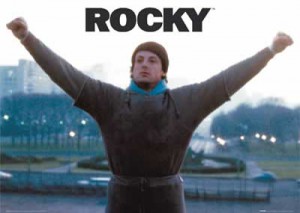[Editor’s note: Non-baseball, non-Nationals post. Originally written in early October right after this show aired but saved until baseball season was over. If you have some time, I highly suggest either getting it on-demand or find a re-run].
The fantastic 30 for 30 series is back on ESPN. The great news was first published in May 2012 and the first installment of the new series aired on 10/2/12. I like doing reviews of the 30 for 30 series (if you search for “30 for 30” in quotes you can see some of the past reviews on this site), and I’ll try to do them for the new episodes. If you’re interested in past looks at ESPN Films and my thoughts on the original series, you can click “30 for 30” in the Category Tab to the right and get all posts on the topic.
First up in the new series, “Broke,” a 1.5 hour documentary by director Billy Corben about the amazing propensity for professional athletes to go bankrupt soon after retiring despite having made millions in career earnings. This is essentially a documentary version of the seminal 2009 Sports Illustrated article on the same topic. The film had some decent interviews and covered several of the typical pitfalls that cause athletes to squander money. In no particular order; blatant overspending on cars, jewelry and houses, financing your family, neighborhood and your entourage, poor choices in advisors, poor financial advice from these “advisors,” squandered business investment, predatory women and marriages, child-support payments that are tied to a player’s salary, and of course the most basic one; absolutely zero retirement planning.
(If you want to read some highlight quotes from the documentary, click on thisBusinessInsider.com link here. If you want to read Jason Whitlock‘s op-ed piece inspired by the documentary, click here. Lastly, a review from Hitfix.com on both Broke and the 2nd in the series is here; we’ll cover 9.79 in a separate post).
My quick review: liked the subject matter, didn’t like the presentation.
The subject matter continues to be topical, nearly every year we hear about guys who have gone broke. The documentary listed dozens and dozens of them at the end of the film. I’ve often wondered how these guys manage to go broke despite 10s of millions of dollars in guaranteed income, but in reality its relatively easy. You can somewhat excuse it when a guy like Curt Schilling loses his baseball fortune attempting to start a software company, but its a bit more inexcusable when you hear about a guy who “makes it rain” in strip clubs with hundred dollar bills. That being said, for every Magic Johnson (who has made a massive fortune owning/operating Movie Theatures and Starbucks franchises, of which he owns more than 100) there are dozens of tales of investments in Car Washes, Restaurants and Record Companies going bad. The film prominently featured Jamal Mashburn, who has turned his lucrative NBA career into the next coming of Johnson; he’s followed Magic’s lead and purchased dozens of franchises in Kentucky; per wikipedia and the film he owns 34 Outback Steakhouses, 37 Papa John’s franchises and a number of car dealerships. Just 40, he’s apparently amassed enough wealth to be in the discussion to purchase an NBA Franchise.
The most egregious examples of pro athletes going broke were not interviewed for the film; Allen Iverson (career earnings in excess of $200 million including salary and endorsements), Evander Holyfield (career earnings estimated at about $200M), Antoine Walker (career earnings of $110M before taxes), Vince Young (ALREADY broke despite a $26M guaranteed contract just 6 years ago!) and the most ridiculous example being Mike Tyson (career earnings of $400M, all gone). A bit of googling resulted in this interesting “Top 10 worst Financial Meltdowns by Athletes” and its a bit mind boggling. The director noted that most of these guys who have been forced to declare bankrupcy for vast sums are far too embarassed to appear on the film, hence the rather random collection of on-screen athletes who did appear (among others, Bernie Kosar, Andre Rison, Keith McCants, Sean Salisbury and Cliff Floyd). I’d say that Rison was probably the closest we’ll see to the blatant modern-day squandering of money that we hear stories about, while Kosar and Salisbury befell some of the other classical bankrupcy issues mentioned above.
The section on predatory women was kind of sad really; the film interviewed a blogger whose site (Baller Alert.com, I kid you not) sends out alerts to female subscribers if/when they find out that basketball players are going to be at a certain location. The blogger noted that one time she announced that an NBA player was at a club in DC and an hour later 1,000 women showed up. This isn’t the first time I’ve read about this culture in the pro sports world; the book Andy Roddick Beat Me with a Frying Pan the author decided to find out how easy it was to bait a pro athlete into hooking up, so he recruited a former girlfriend, she got some “coaching” as to how to dress and act, and they inserted her into a bar situation where a known pro athlete was present. Sure enough, the athlete sent over a handler and tried to press onwards with a relationship.
I was left with two overriding thoughts after watching the film:
1. It was really, really difficult to watch this film as a middle-aged white male and not pass judgement on the ridiculous spending exploits of predominantly young black males. I alluded to salary just a couple weeks ago in this space, talking about how John Lannan was set for life on the basis of his $5M 2012 contract and how I didn’t necessarily feel sorry for the guy. But the fact is that most athletes don’t see a singular payday this way. The film certainly wasn’t apologetic for these guys getting into trouble; it merely analyzed what generally happens to these young players. They get paid, they spend money, they make mistakes, they have children out of wedlock and incur massive monthly payments, they buy 5 houses and 8 cars, they don’t plan for the future … and then suddenly they’re out of the game and they go from millions a year to Zero income. It is a common tale. This documentary certainly isn’t EXCUSING this behavior; it just explains how it happens.
2. I’m surprised that the pro sports don’t do more to heed this off. The film showed Herm Edwards giving the incoming NFL rookies his speech at the Rookie Symposium … and then talked about how most rookies sleep through the sessions. I’m surprised that the unions havn’t recognized this as a massive problem and forced some sort of IRA contribution out of their players upon entrance to the leagues.
From a “film critic” stand-point, while the subject matter was pretty interesting I wouldn’t rank this film with the upper echelon of 30-for-30 works (“The Two Escobars,” “Four days in October” being some of the best of the original run). I thought it could have been done in an hour, I thought it should have done a better job focusing on the more egregious cases of players gone bankrupt, I thought they could have found better representatives to talk than guys like Homer Bush and Sean Salisbury (Homer Bush!? I had to look him up on b-r.com: 409 career games? And he’s talking about athletes squandering millions? Well, he did manage to make $7.7M per his b-r page, so that’s not chump change. Bush reportedly was not happy with the way he was portrayed in this film, as mentioned on Slate’s Hang Up and Listen podcast). Lastly I thought having the SAME song playing for virtually the entire show got old, fast. Critics didn’t like the “soundbyte after soundbyte” presentation, which lasted well into the film.

